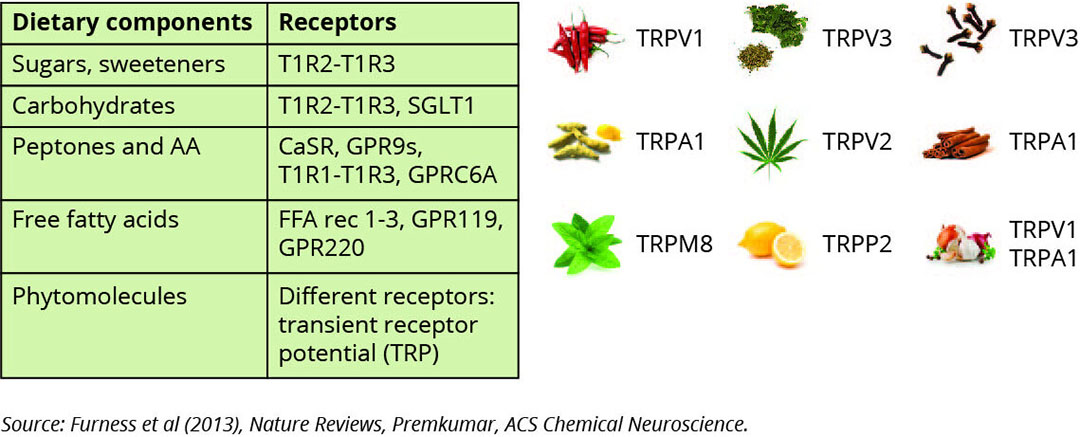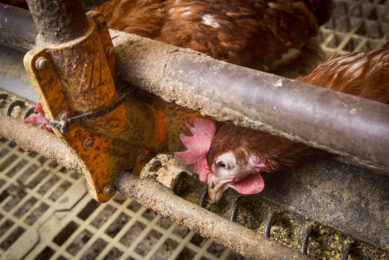Unlocking the power of functional nutrition

Recent scientific and technological advances have provided new insights into how the digestive system works and its impact on animal metabolism. These developments open up the use of bio-functional components to meet today’s challenges in livestock production.
Until recently, the digestive system of animals was thought of as a sequence of 3 processes which extract and absorb nutrients from food:
- Mechanical, such as crushing food during chewing or in bird gizzards and mixing in the stomach;
- Chemical, such as the action of stomach acids and bile salts; and
- Biochemical, via the action of enzymes such as amylase, proteases and lipases that fraction large food molecules.
This model, however, gives the wrong impression: the intestine is not an inert pipe. It’s covered by mucosa, formed by enterocytes and underlying cell layers that ensure diverse functions depending on their structure and cell type.
Bio-functional components
The surface of the mucosa is covered with a multitude of receptors that are essential to the digestive process and overall homeostasis. These receptors can be mechanosensitive, detecting the torsion, stretching and tension of the intestine or they can be receptors of physical parameters such as temperature, osmolarity or acidity. Some of them detect internal secretions such as bile secretions while others are sensitive to microorganisms and toxins. When these receptors are activated, they influence the digestive process and have a significant impact on the endocrine, circulatory, muscle, nervous and immune systems1. What’s more, new receptors that influence digestion and metabolism are constantly being discovered, such as specific receptors for bio-functional components of plants. Most of these belong to a superfamily called Transient Receptor Potential (TRP), which is currently divided into six families: A, C, M, ML, P, V, according to their protein structure and genomic sequence2. TRP receptors have been the focus of intensive study due to their strong regulatory activity. In addition to influencing taste, they are involved in the metabolic signalling pathways for heat, pain, fatigue, protons, phospholipase C, etc2.
Figure 1 – Receptors in digestive system for nutrients and phytomolecules.

Application in feed
Using bio-functional feed products to stimulate these receptors is a compelling method to achieve potential improvements in the health, productivity and sustainability of animal production. Laboratory research has demonstrated that stimulating TRP receptors with a diet containing capsaicin or turmeric increases secretion of bile acids3. Subsequent research on farm animals confirmed increased energy in the diets of broilers fed with carvacrol, cinnamaldehyde and capsicum oleoresin leading to improved productivity4. Stimulating ruminants’ TRP receptors through a bio-functional product-enriched diet also proved beneficial, resulting in improved daily feed consumption pattern in calves fed with capsicum5. Another study showed reduced insulin secretion in dairy cows fed with capsicum protected from rumen degradation, maintaining blood glucose levels and benefiting insulin-independent tissues such as the mammary gland6. These receptors also improve animals’ ability to endure heat stress periods by influencing metabolic thermoregulation systems7.
Immune-modulatory effects
Recent research also indicates that these receptors are involved in immune system regulation both in the intestines and throughout the body. The gut contains various types and subtypes of immune cells such as B and T lymphocytes, regulatory cells, granulocytes and macrophages. Among these macrophages, dendritic cells emit pseudopods that pass through the mucosa, coming into direct contact with intestinal contents. Dendritic cells have many kinds of receptors including one which detects the bio-functional molecules of plants such as TRPV11. This particular receptor is also found in the membrane of other immune cells such as T cells, natural killer cells and other macrophages. When stimulated by capsaicin, it has an immune-modulatory effect which lowers production of prostaglandin E, NF-kB factor, cytokines, chemokines and decreases inflammation8. Capsaicin has a scientifically proven effect on the immune system of farm animals. In piglets challenged with pathogenic Escherichia coli F-18, a capsicum-enriched diet reduced the number of leukocytes, circulating neutrophils, ileal macrophages and serum concentrations of the inflammatory markers TNF-A and haptoglobin, as well as reducing diarrhoea9.
Effect on gene expression
Recent nutrigenomic research on plant extracts with bio-functional properties shows that they have a substantial impact on gene expression. Experimental infection with a pathogenic strain of E. coli in weaned piglets modified the expression of 418 genes in intestinal cells. The use of bio-functional components such as capsicum oleoresin, garlic extract and turmeric oleoresin modified 74, 203 and 183 genes respectively in challenged animals. Bioinformatics analysis of these variations in gene expression revealed increased expression of genes related to intestinal mucus secretion and reduced expression of genes related to immune overreaction. Benefits range from modulating immune reactions to enabling animals to better protect themselves against infections10.
Value of gut health research
This brief review of scientific advances in animal nutrition highlights the huge strides made in digestive system research. We are gaining new insights into how the digestive system works at an amazing pace. Today, we have an exceptional opportunity to apply this knowledge to animal nutrition, using bio-functional compounds to meet current and future challenges in animal nutrition, production and health.
References 1-10 are available on request.











